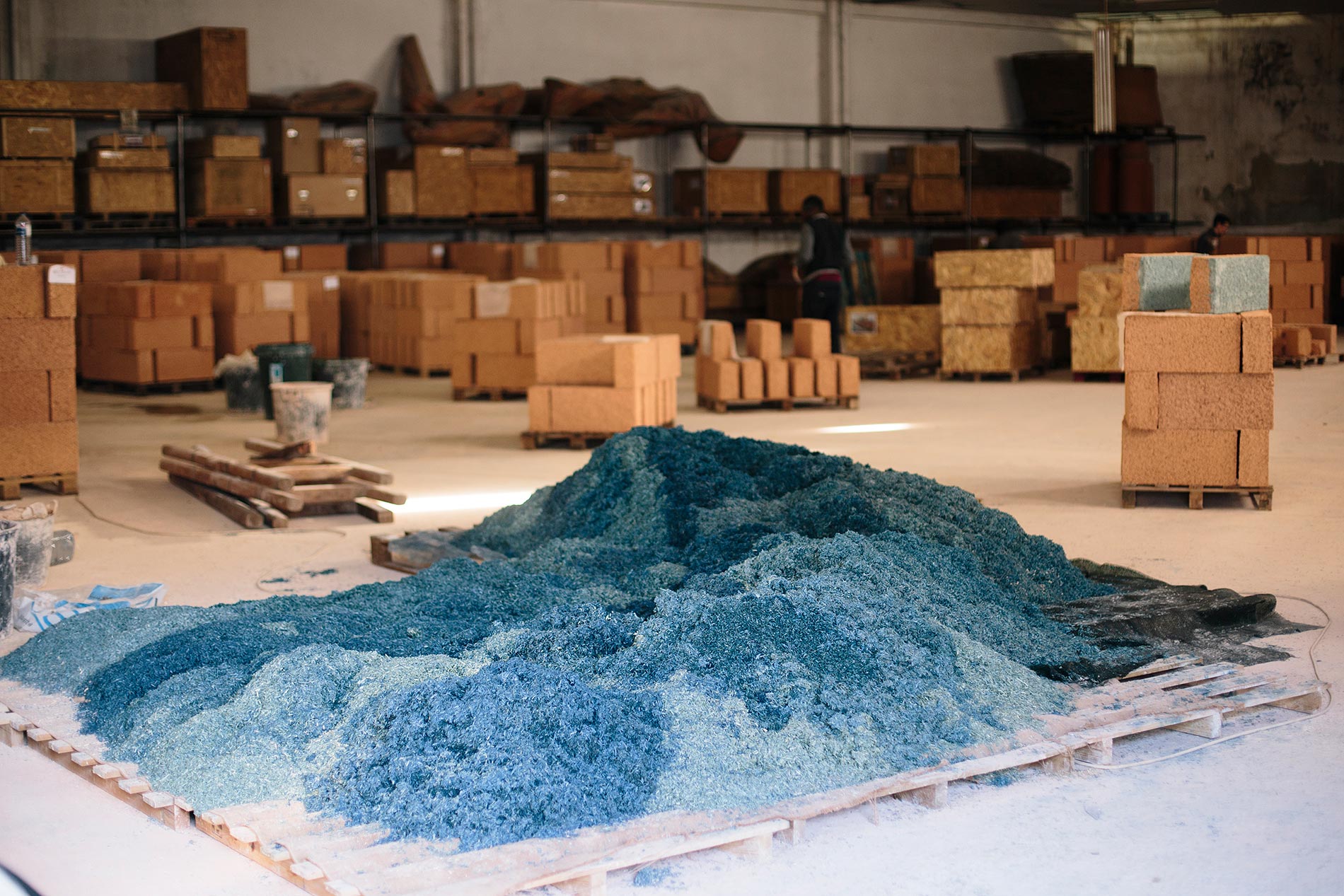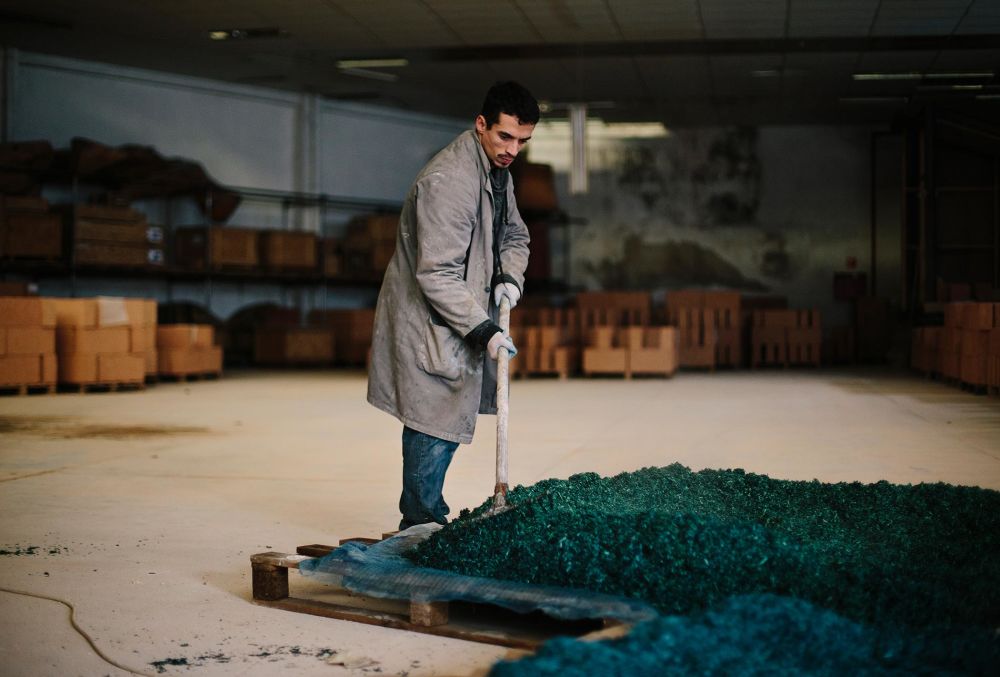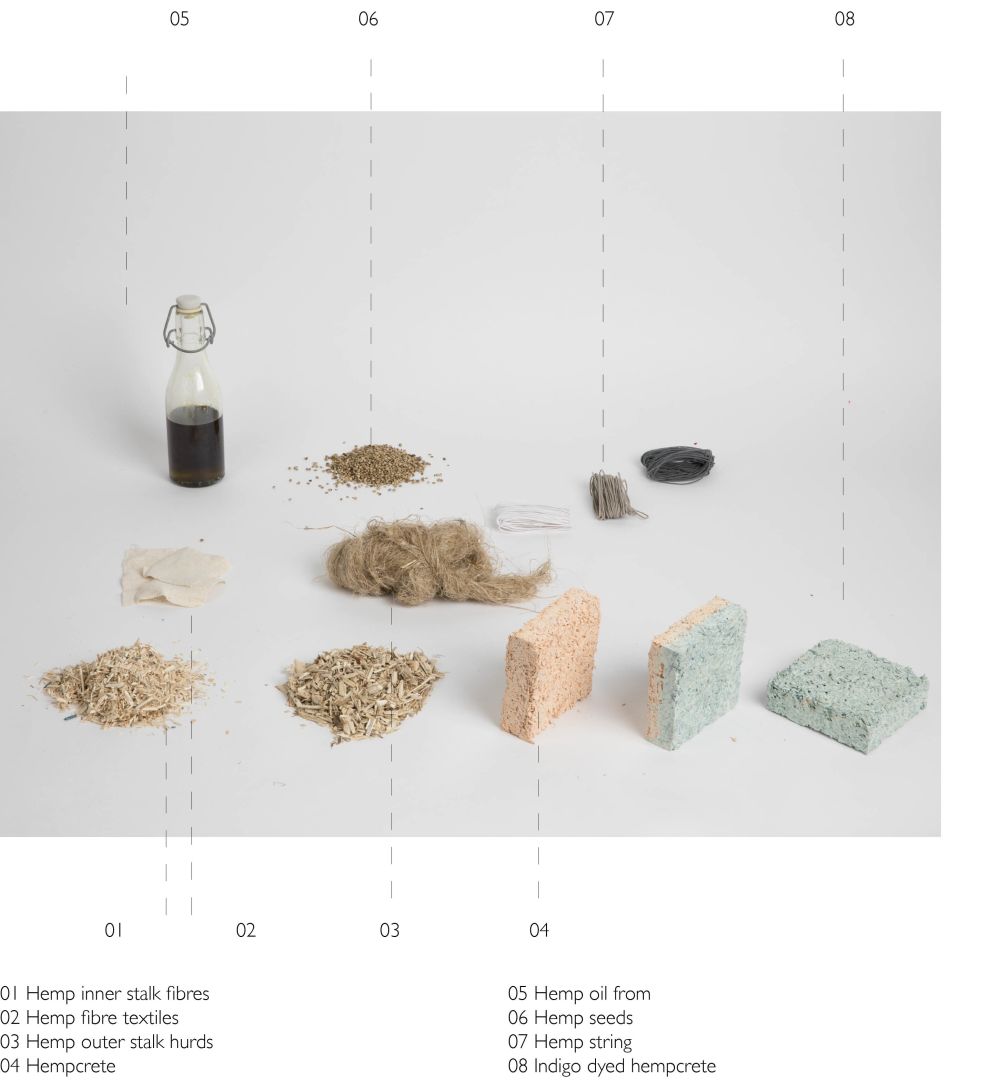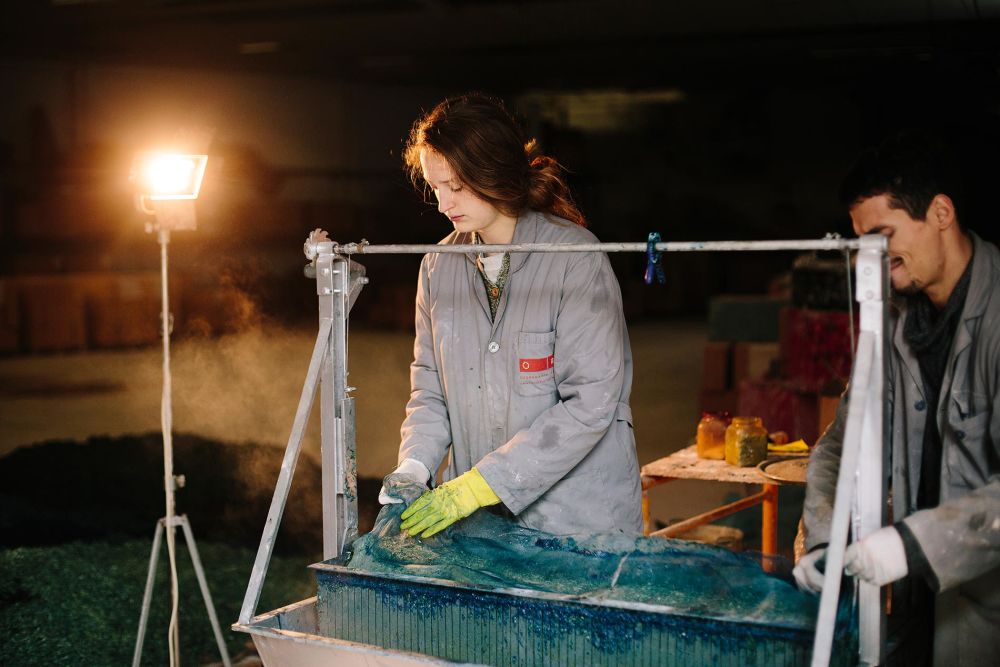On show in Designing in Turbulent Times at the Lethaby Gallery, Olivia Page's Recipes of North Portugal proposes new processes and material prototypes to incorporate industrial and bio-based waste in construction. We talk to the recent M ARCH Architecture graduate about positivity and the point of design.

Recipes for North Portugal, Olivia Page, M ARCH Architecture
Page has developed new design processes and material prototypes which incorporate industrial and bio-based waste. These materials, as well as those from invasive species such as the Acacia Tree, were sourced within a fifty-kilometre radius around the city of Porto. The project proposes a material palette which can help decrease landfill, increase biodiversity and promotes biodegradable qualities. The scheme also supports local businesses to depend less on non-renewable materials and fossil fuels. Page imagines the architectural application of this project as a factory which would generate and promote these alternative materials for the built environment.
What was the experience that sparked your research?
"I worked on a 'sustainable hemp-concrete' project in Porto but strived for a more accessible and larger range of sustainable materials. I want these to embody fully holistic sustainable principles that reflect the word's real meaning. For my project, materials had to be sourced locally to the site and innately embody the following:
- Decomposability, considering their disassembly post-life use
- Replace the need for petroleum based in matter and high-energy processes for manufactured construction materials. Save energy by decreasing the demand
- Any heating to be kept under 200°C, maximise energy transfer appropriately for multi-function and use
- Promote cross-disciplinary teams, including biologists, chemists, engineers, construction workers, designers, students, governments
- Collaborate with, and support, existing local businesses, people and their waste
- Low technology and design for ease of mass replication"
Gallery
If you could change one thing in the world to get us to one-planet living, what would it be?
"Investment... policy and finance are the key players; the collective and huge task is way beyond designers. But designers have a level of power over culture, changing general public attitudes. They can be visionaries, leading the paths to new ways of living."
"Our greatest problem is our desire to always have more and never be content. But that's perhaps an innate human thing. Therefore, positivity would be the greatest gift in this mess of madness."
What is the role of designers in society's collective push for a more sustainable way to live?
"I think that the function of design is to solve problems; my desire to act as a designer comes from seeing the world around and wanting to do it better. Therefore I wouldn't want to exist in the current unequal practices without attempting to address them.
To offer comprehensive visions of what this 'new world' looks like.
To avoid greenwashing and promote sustainability as one whole thing rather than individual trends, buzzwords and #s
Keep hoping. Praising progressive steps in the right direction rather than criticise the lacking, small steps which are still better than nothing at all.
Perhaps, if we solved our sustainability challenges and couldn't do any better, I wouldn't be a designer anymore."
See Olivia Page's work in Designing in Turbulent Times, a Central Saint Martins, LVMH and Maison/0 exhibition at the Lethaby Gallery, 14 September – 27 October.







